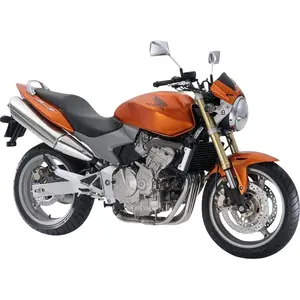Hello /c/selfhosted!
Im sorry if this is not the place to ask but i figured id give it a shot. Mods feel free to delete if i should post elsewhere.
Im currently contemplating building an actual home server. My problem is i have no idea what to prioritize in a server. My main concern is probably power consumption and price. It doesnt really need to be a brast. I currently self host a media center on my gaming rig which id like to move over and id like to be able to host stuff like Immitch and maybe some game servers from time to time.
Im fairly confident in my building skulle since ive built a fair share of gaming rigs over the years but i dont really know whats optimal in a server setting. So i come to you to ask about this landscape.
Im thinking good amount of RAM a fairly recent AMD processor on an unspecified motherboard. I do have an M.2 and extra HDD lying around and also an old GPU (GTX 960) but idk if GPU matters. In any case, how would one go about reducing power consumption, my first idea was underclocking the CPU even though i know AMDs recent CPUs should be pretty efficient. But is there any other, better, solutions to bring down idle consumption?
As stated im pretty fresh on this. Closest ive gotten to a home server is a couple of RPis. Any information or tips are very welcomed!
(Edits: typos)
If you can live without the dedicated GPU for the media center, you can get an Intel CPU instead, which have QuickSync for media transcoding. It will use a fraction of the power a dedicated GPU does with the same workload.
That’s likely the place you can gain most power effeciency.
+1
I’m running a media/back up server for 4 households on a single n100 mini pc and a couple USB drives. It’s a “good enough”, low cost, high wife acceptance factor entry point into self-hosting. It’ll happily age into a firewall if I want to build a better box later on.
It’s revealing what I do/don’t need vs what I want. It’s teaching me what people use, what they don’t and where I might want to go in the future.
If I could go again I’d probably get a n100 2Bay Ugreen thing. Then it’d age into a local back up and I wouldn’t have to deal with USB drives.
I don’t recommend buying a discrete GPU. For home-level hardware iGPU systems like Strix Halo are much better than discrete systems. For example Strix Halo can run models that you need multiple 5090s for.
If you have old parts, use those, it’ll probably overkill. Most server stuff isn’t very resource intensive, so a little goes a long way.
If you’re buying something new, I’d recommend something small, like a Mini PC or an N100 rig. 16GB RAM is probably enough, and anything with more than 4 cores is probably overkill. A dedicated GPU is unnecessary, something with a modern-ish iGPU will be plenty to transcode video.
Using recycled parts is the best advice. As you said, it’s almost certainly overkill and the price can’t be beat.
Tip, if you have the room for it, looking for second hand servers (as in actual servers with server hardware) is often really useful.
As you start hosting more stuff you realize that ram and cpu cores are very limited in consumer hardware. With a shitty second hand server you could have more cores and more ram than anything in the consumer category, and you can stick an old GPU on it if you want some better media performance.
But if you truly believe that you won’t spread out and that potentially 64gb ram and 8 cores will suffice, just go ahead and build it however you want. It is no different from a regular build. Get a nice ssd, get a wired ethernet connection and you are like 90% of the way there.
Edit: everyone else is giving much better advice, ignore my overkill here. For media and simple game servers with a low energy consumption target you are probably better off with a mini pc with an integrated gpu or if you want to future proof a bit, maybe one of those unified memory ones where you ram is also the vram and can produce pretty good performance.
Sorry for not being able to answer until now. From what i can summarize a dGPU seems useless for my case. It also seems like a 11th gen i5 is the way. I wonder, does RAM speeds matter? If i can get a mini or micro ATX board and hook up an i5 with a good amount of DDR4 RAM i think i can get away cheaply. Will probably start off with a small M.2 and see if i can hook up my HDD later.
Also which i5 would you suggest? I havent been on intel since my 4690K so i have no idea whats “good” or “enough”.
As people have said, the Intel CPU with quick sync will be much better on power.
You could also use your m.2 to caache your regular hard drive with BTRFS and LVM or something like https://bcache.evilpiepirate.org/
Maybe spin down your HDD when it’s not being used. Most of your power savings are going to come from not transcoding unless you need to, transcoding efficiently when you need to, and powering things down when you don’t need them.
In Linux you can mess with your clock regulation, probably even put the box to sleep when you don’t need it, maybe wake on lan.




